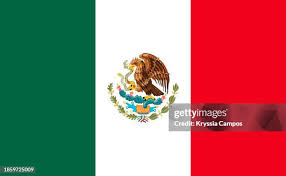Understanding the Significance of the Mexican Flag

Introduction
The Mexican flag is not just a piece of fabric; it is a powerful symbol of national pride, history, and cultural identity for millions of people both in Mexico and across the world. With its striking green, white, and red colors and rich emblem, the flag represents the values and heritage of Mexico. Understanding its significance provides insights into the country’s struggle for independence and its evolution as a modern nation.
The Colors and Emblem
The Mexican flag features three vertical stripes of green, white, and red. Each color holds a specific meaning: green represents hope and prosperity, white signifies purity and unity, and red stands for the blood shed by those who fought for Mexico’s independence. In the center of the white stripe lies the national emblem, which depicts an eagle perched on a prickly pear cactus, devouring a serpent. This emblem draws from an Aztec legend about the founding of Tenochtitlan, the capital of the Aztec Empire, symbolizing strength and resilience.
Historical Context
The design of the Mexican flag has undergone several changes since its first official adoption in 1821. The eagle and serpent motif have been integral since the early independent period, but the colors and layout evolved until they were standardized in 1968. The flag was last modified in 1984 when details of the national emblem were defined to ensure consistent representation. The flag is elevated to the status of a national symbol, celebrated during national holidays and significant events, such as Independence Day on September 16.
Recent Events and Celebrations
Recently, the Mexican government has placed emphasis on promoting national pride through the flag. Events surrounding the flag include the Grito de Dolores, a ceremony that marks the start of the Mexican War of Independence. The flag is displayed prominently during parades, and citizens are encouraged to show their patriotic spirit by displaying the flag at home. In 2023, a major celebration marked the 200th anniversary of the flag’s adoption, with cultural exhibitions showcasing its history and significance.
Conclusion
The Mexican flag continues to serve as a source of unity and pride for Mexicans around the world. Its colors and emblem encapsulate a rich history that reflects the nation’s struggles and triumphs. As globalization continues to connect cultures, the Mexican flag remains a steadfast reminder of national identity and heritage. Moving forward, the government and cultural institutions will likely continue to engage citizens in understanding and valuing their emblem, ensuring that the flag remains a vibrant symbol of their past and future.









